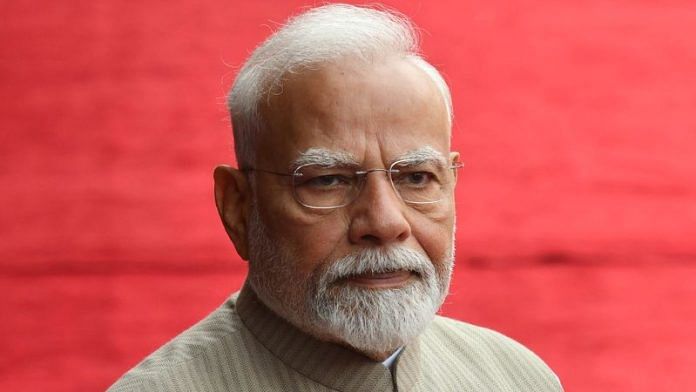One, unlike post-war Europe, Japan, the Asian tigers, and China, which became economic powerhouses with the blessings of the US, India will not have any of that advantage. In fact, both the US and China will do many things to slow down India’s growth and rise in global stature. Until we become a , and generate lots of quality jobs, we will be both internally and externally under pressure. However, reaching $10 trillion may take us a decade, if not more, even under the best of circumstances.
Two, while our defence capabilities are improving and increasingly based on internal capabilities, high-tech war-making machines like the AMCA (advanced medium combat aircraft with stealth capabilities), may take 10 years to develop and deploy, not to speak of warships and nuclear submarines to guard the Indian Ocean Region. And that is an optimistic scenario. But China is accelerating the with stealth fighters—leaving us vulnerable in the short-term.
The purpose here is to not just emphasise the challenges, but make a broader point on how they can be overcome by sheer political will: India cannot do this without greater political consensus. Without consensus, the reforms needed to speed up growth and achieve atmanirbharta (self-reliance) in defence will remain stalled, as political parties stay busy spending taxpayer resources on freebies just to get elected. Government and opposition will be working at cross-purposes. Our 0.5 front is not only about secessionist forces, but any debilitating political opposition that could thwart forward movement on reforms. Calling the opposition anti-national serves no useful purpose.
Our internal ruptures are not always the result of policy disagreements; they have an intractable edge because of political ego clashes and deep personal animosities. This is epitomised by the deep distrust Narendra Modi and Rahul Gandhi have for one another, even though they will probably end up doing the same things when in power. Under Modi, there is practically no Congress initiative—direct benefit transfers, Aadhaar, MGNREGA, etc—that the Modi government has not carried forward with minor tweaks. This is unlikely to change much even if the roles were reversed in any future election, though that seems unlikely right now.
As always, the initiative lies with the Modi government, as was amply demonstrated recently when it constituted and dispatched all-party delegations to multiple countries to canvas support for India’s stand on terrorism after Operation Sindoor. The only sour note was struck by the Congress party, whose members were a major part of these delegations.
The Congress was distinctly uncomfortable with the government’s choice of delegates, especially Thiruvananthapuram MP Shashi Tharoor. A simple phone call from the Prime Minister to Rahul Gandhi could have resolved the issue. Instead, the government chose—wisely, in the end—an articulate Tharoor, despite the Congress’s objections.
India needs reforms and deregulation in many areas, including defence, agriculture, land and labour laws, and in the police-legal-judicial system, which is neither capable of delivering speedy justice nor maintaining law and order without draconian laws. These non-economic reforms are what will enable us to become a $10 trillion economy faster.
Even with a political consensus, these reforms will take three to five years to start delivering, and so we need a Prime Minister fully engaged with this effort—not one distracted by short-term political compulsions.
The good news is that Modi has ample political capital. The big question is whether he will use it sparingly, more to win elections than to build consensus. For example, whenever all-party meetings are called, he leaves it to his lieutenants to manage, and seldom makes a personal appearance. Trying to stay so far above the battle and not be willing to spend some of his political capital to ensure consensus is not a healthy sign.
Most of Modi’s policies are broadly in the right direction—barring the rapid expansion of freebie culture—but given India’s forthcoming decade of vulnerability, he must consider focusing primarily on meeting those threats, and devolve more power to states and local bodies.
India’s diplomatic and security challenges are great, and tackling them needs extreme political focus. How can you be building India’s defence capabilities and global alliances—which require considerable attention—when you also have to deal with angry farmers landing up on Delhi’s doorstep and blocking the roads? Should agriculture not be left fully to states to handle, with the Centre only focused on building national buffer stocks in crucial food grains and critical commodities like petroleum products or rare earths?
How can you evolve a sensible strategy to attract manufacturing if you are busy dealing with intractable law and order issues, a dilatory judicial process, and a restive minority population—especially when land and labour laws remain unreformed? How can you manage fiscal and monetary policy effectively if states are constantly cribbing about the lack of resources, and power subsidies and other freebies are draining exchequers? How can you create good jobs if urban areas are so poorly governed, and the infrastructure needed to enable orderly growth is pathetic?
The Modi government lost its reform mojo in its second term, even though it had a parliamentary majority. After he was forced by street pressure to in 2019 and put the Citizenship Amendment Act (CAA) in abeyance until election time in 2024, the reform agenda took a back seat. The P word—privatisation—has gone missing after Air India was handed over to the Tatas.
Forget opposition obstructionism. Can Modi get even his own BJP-ruled states to deregulate, reform and make the changes needed to force competitive reforms in other states? Paradoxically, Modi’s political capital may also be hindering reform, for his own partymen may think political survival only needs them to sing Modi’s praises instead of doing the hard work on reforms. The opposition also believes that defeating Modi needs excessive spending on freebies.
Modi has to use his political capital to push all kinds of reforms forward, in both BJP-ruled states and those governed by the opposition. If that needs the Centre to shed some of its excess powers, so be it. If Governors need to be reined in, jolly good. If delimitation is on the table, Modi must again step up to the plate personally. He cannot leave these jobs entirely to his ministers, who may not have the political heft to swing the deals needed to move India forward.
As for China, Modi has the difficult task of both engaging Beijing for equitable trade deals and building up military muscle to deter any adventurism on its part. A tough balancing act, which would be easier if the opposition were not constantly carping about his weakness, including levelling the preposterous allegation that Modi gave in to Donald Trump’s pressure during Operation Sindoor, as encapsulated in Rahul Gandhi’s “Narender, Surrender” jibe. In the short post-Pahalgam conflict with Pakistan, of Islamabad’s armaments was unmistakable.
PM Modi must ask himself a simple question: what is the use of all my prestige and political capital if it ultimately does not get things done for the country? He has to get his politics right. This means his 56-inch chest must disclose an open heart to win over the opposition in the interests of the country. He can leave the task of winning elections to his second-in-command and state satraps, who must be allowed to grow in stature and do the job he is trying to do when he has other things to worry about. India does not need double-engine sarkars; it needs three engines firing in sync—at the central, state, and local levels—to boost growth.
In short: India’s decade of vulnerability needs a Prime Minister fully engaged with the threats and challenges it faces—both globally and at home. He cannot afford to be distracted by the need to pander to narrow politics.
(Edited by Prashant)








